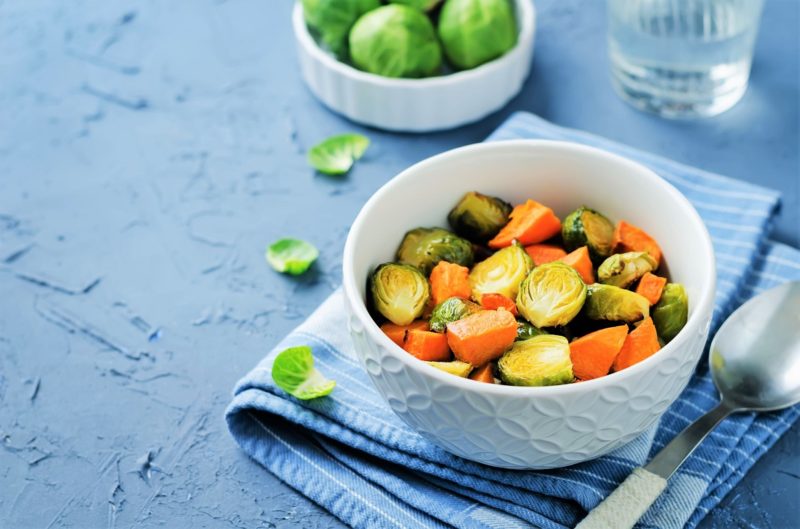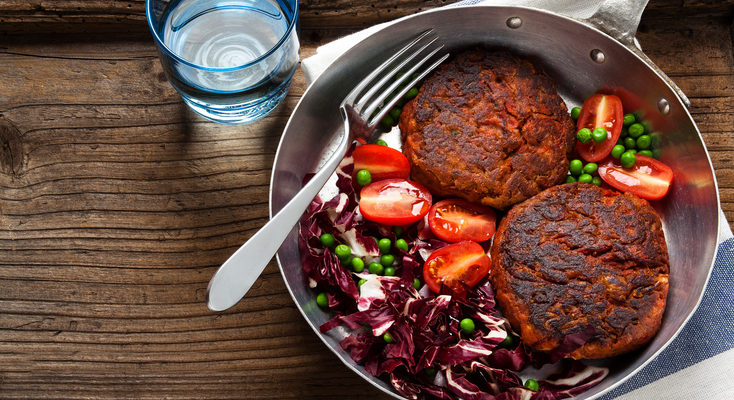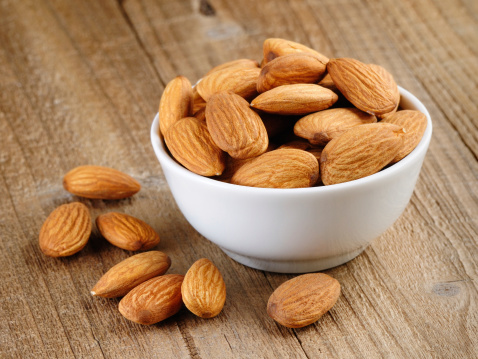
It’s officially autumn. And aside from cooler temps and shorter days, with fall comes a healthy harvest of tasty and nutritious produce. From root veggies to fabulous fall fruits, there are plenty of delicious options to fall for this season. Here are our top 6 fall produce picks: start incorporating them into your diet today.
1. Pumpkin
Scientifically named the Cucurbita pepo (“pepo” means “to ripen in the sun”), this quintessential fall favorite is good for more than decorating your front stoop. Pumpkin is an excellent source of vitamin A, which is important to eye health, as well as fiber, which can keep you feeling full. Together, the nutrients in pumpkins can also give a big boost to your immune system, which is pretty sweet considering we’re heading into flu season. Whip up a creamy pumpkin soup or incorporate it into your favorite baked goods! Be sure to check out the recipe section here on The Leaf for plenty of delicious pumpkin recipes. Get inspired by the healthy ideas below:

2. Beets
Beets are low in calories and sodium, and are fat- and cholesterol-free. These tasty superfoods are an excellent source of folate, and also provide fiber, potassium and vitamin C. Plus, beets are rich in naturally-occurring nitrates, which may help support healthy blood pressure and may even help boost athletic performance. A study, published in the April 2012 issue of The Journal of the Academy of Nutrition and Dietetics, demonstrated that subjects who consumed cooked beets experienced improved running performance. But these aren’t the only reasons beets beat other produce in our list of top picks. We love the fact that beets are actually edible from their roots to their leafy greens. Beet greens are loaded with nutrients and are similar in consistency and taste to spinach. Try them sautéed as a side to any of your meals. As for the beets themselves, try roasting or steaming them whole (don’t worry about peeling―the skin slides off after cooking) or slicing them thinly then baking them to create chips. You can also shred raw beets and add them to your favorite salads.
3. Brussels Sprouts
Brussels sprouts are low in fat, sodium and calories, and are cholesterol- and saturated fat-free. Plus, they dish out dietary fiber, vitamin C and folate. And although in some households they’ve gotten a bit of a bad flavor rap, the truth is, these nutritious little nuggets can be delicious! Try tossing them in a bit of olive oil and seasonings then roasting them, or steam them and top them with low fat cheddar cheese. On Nutrisystem, a half cup of cooked brussels sprouts counts as one Vegetable serving.

4. Apples
A universal fall favorite, apples are full of nutrients and are a great source of dietary fiber. Just don’t peel them or you’ll risk losing two thirds of the fiber and a large portion of their antioxidants, which are contained in the peel. There are plenty of ways to enjoy apples: raw, baked with cinnamon, chopped up and added to your favorite salad or roasted veggie mix. Or try making your own applesauce in a slow cooker. Just core and quarter 10-12 medium apples (any variety will do), then placing them in the slow cooker along with two tablespoons of water, one teaspoon of apple cider vinegar, a tablespoon of cinnamon and a teaspoon or so of nutmeg, then cooking on low for about three and a half hours. On Nutrisystem, one medium apple counts as one SmartCarb. If you try your hand at the homemade applesauce, count a half cup as one SmartCarb.
5. Sweet Potato
If you’ve ever tried a warm sweet potato with cinnamon, then you know just how delicious these starchy veggies can be. But the sweetest thing about these potatoes isn’t their taste―it’s all the body-boosting nutrition they provide, like vitamin C, calcium, potassium, iron and fiber. Plus, one medium, baked sweet potato serves up over 400 percent of your daily vitamin A needs. Just don’t mistake sweet potatoes for their cousins, yams, which contain fewer nutrients. Try slicing a sweet potato into wedges, spraying with zero-calorie cooking spray and sprinkling with cinnamon and nutmeg or your favorite seasonings, then baking. On Nutrisystem, a half cup of sweet potato counts as one SmartCarb.
If you love sweet potatoes, you’ll love the Nutrisystem-approved recipes below:
- Skinny Mashed Sweet Potatoes >
- Ginger Sweet Potato Bites >
- Vegetable Quiche with Sweet Potato Crust >
- Southwestern Sweet Potato Salad >
- Sweet Potato Crackers >

7 Snacks To Beat the Afternoon SlumpREAD MORE
6. Parsnips
Resembling supersized white carrots, these tasty veggies are considered carrot cousins. They’re shaped like carrots, but have white flesh and a slightly stronger taste (think turnips or rutabagas). Not only are parsnips fat-free, cholesterol-free and low in sodium, they’re also a good source of fiber, and just one half cup of cooked parsnips yields more than 10 percent of your average daily requirement of vitamin C, folate and manganese. One of our favorite things about parsnips? Their versatility. They can be roasted, steamed, pureed, spiralized or even mashed. Try using them in place of potatoes in a mashed potato recipe, or swapping in shredded parsnips in place of cabbage in your favorite coleslaw recipe.